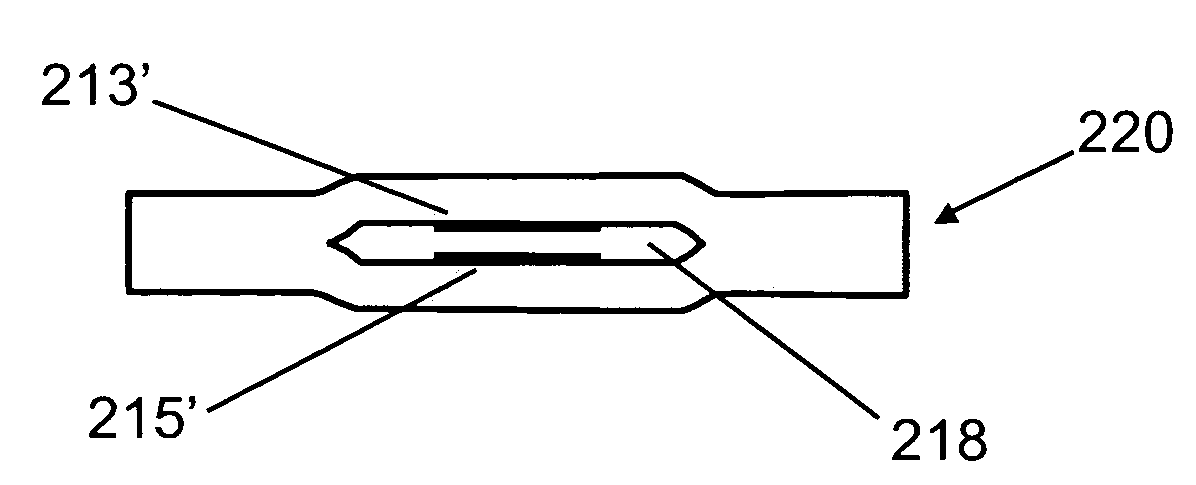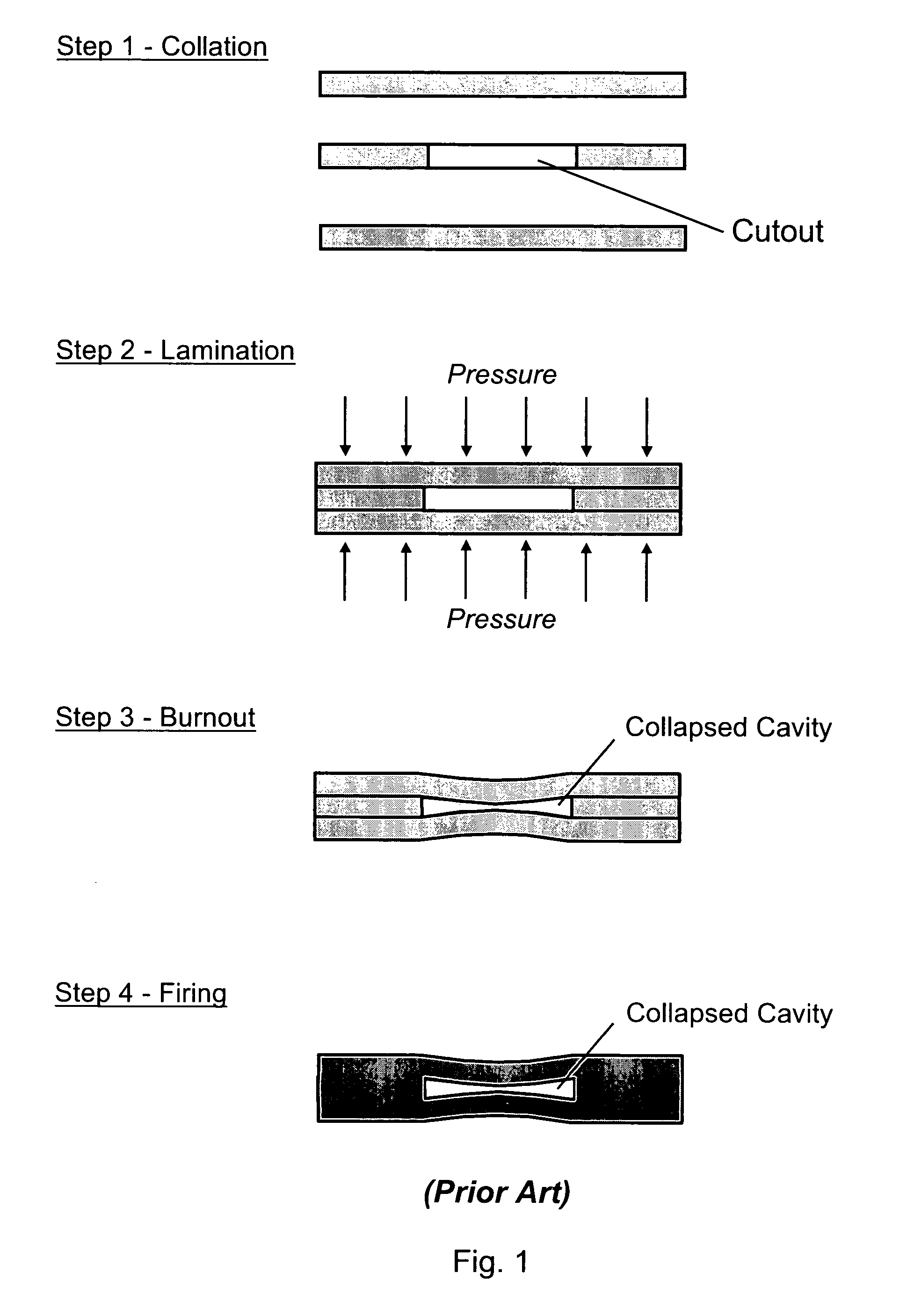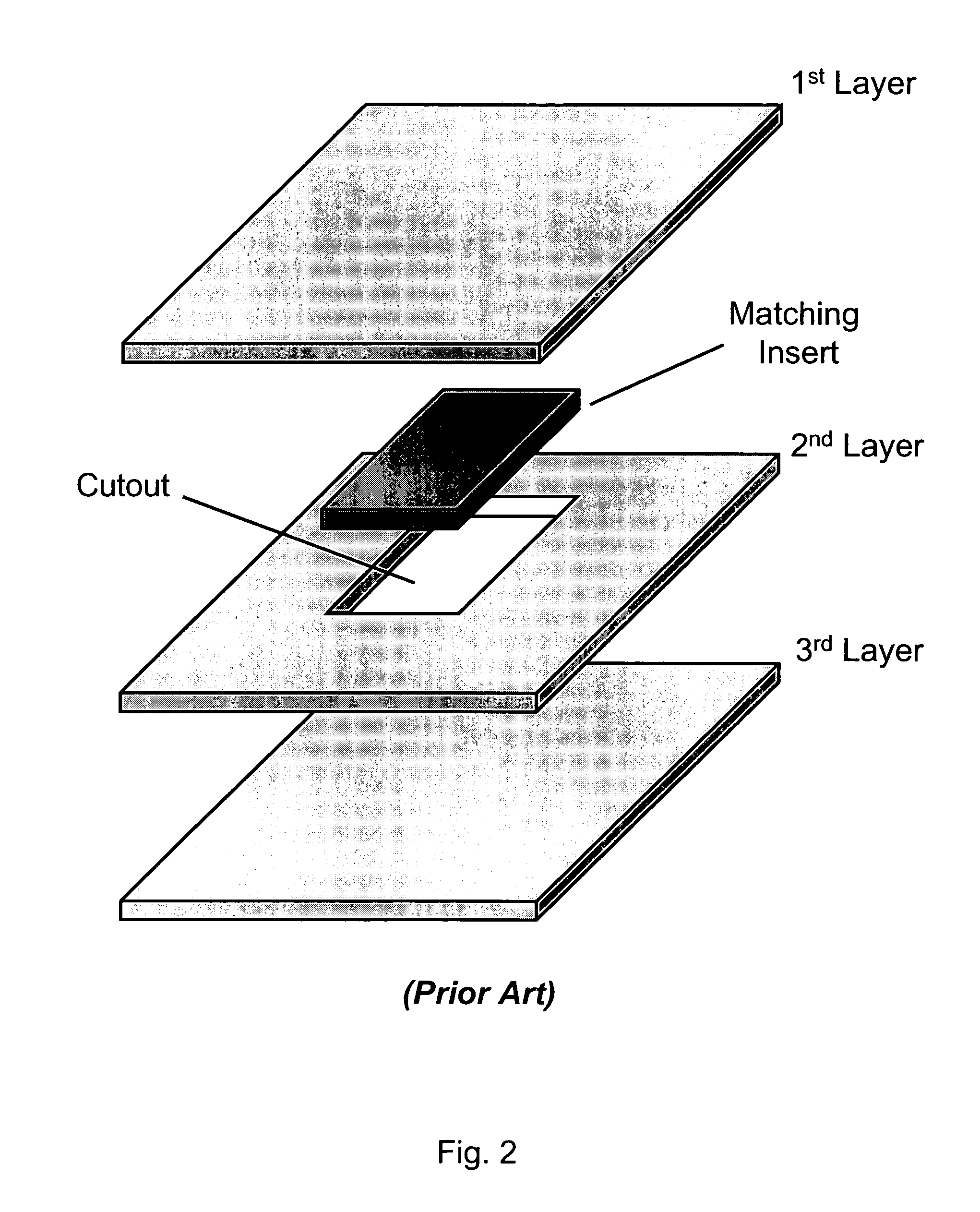Method of using sacrificial materials for fabricating internal cavities in laminated dielectric structures
a technology of laminated dielectric structure and sacrificial materials, which is applied in the field of using sacrificial materials for fabricating internal cavities and channels in laminated dielectric structures, can solve the problems of sacrificial material burnout, internal cavity walls above and below the cutout can sag or even collapse, and all of these steps require additional time and costs
- Summary
- Abstract
- Description
- Claims
- Application Information
AI Technical Summary
Benefits of technology
Problems solved by technology
Method used
Image
Examples
Embodiment Construction
[0049]Hereinafter, when the term “LTCC” is used, it defined to include the HTCC material system, unless specifically stated otherwise. The term “green tape” is herein used interchangeably with “unfired ceramic”. The term “green tape” is defined to include “green sheets”. The word “cavity” is defined to include channels, microchannels, capillaries, conduits, wells, internal volumes, blind volumes, passageways, manifolds, and grooves. The terms “fugitive insert”, “sacrificial mandrel”, and “sacrificial volumes” are all used interchangeably to refer to a piece of sacrificial material that is subsequently removed from the finished structure after being used to define an internal cavity.
[0050]FIG. 4 shows an isometric view of a sacrificial mandrel disposed in-between two layers of deformable dielectric material, according to the present invention. First layer 12 and second layer 16 comprise a deformable dielectric material, which may be the same or different material. Examples of deforma...
PUM
| Property | Measurement | Unit |
|---|---|---|
| diameter | aaaaa | aaaaa |
| pressure | aaaaa | aaaaa |
| thickness | aaaaa | aaaaa |
Abstract
Description
Claims
Application Information
 Login to View More
Login to View More - R&D
- Intellectual Property
- Life Sciences
- Materials
- Tech Scout
- Unparalleled Data Quality
- Higher Quality Content
- 60% Fewer Hallucinations
Browse by: Latest US Patents, China's latest patents, Technical Efficacy Thesaurus, Application Domain, Technology Topic, Popular Technical Reports.
© 2025 PatSnap. All rights reserved.Legal|Privacy policy|Modern Slavery Act Transparency Statement|Sitemap|About US| Contact US: help@patsnap.com



